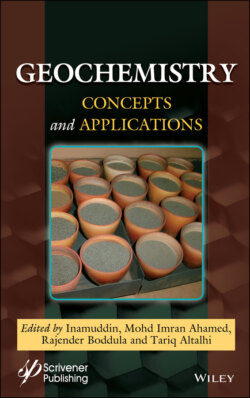Читать книгу Geochemistry - Группа авторов - Страница 11
1.2.2 Occurrence and Behavior of Toxic Contaminants 1.2.2.1 Chrysotile Asbestos
ОглавлениеChrysotile is a fibrous asbestos mineral, which is a human carcinogen [4, 20]. Due to its toxicity, chrysotile and other types of asbestos have been long-banned in most developing countries. The physico-chemical behavior of chrysotile is defined by its crystal habit, fiber size, chemical composition, biopersistence, and surface reactivity, including capacity to generate reactive oxygen radicals [4, 21, 22]. Its fibrous nature, low density, and long residence time, coupled with unique aerodynamic properties make it a unique contaminant. For example, due to its biopersistence and aerodynamic properties, chrysotile can be transported over long distances from the sources to other environmental compartments [4]. Chrysotile undergoes limited biochemical degradation and is not taken up by plants due to its fibrous nature. Evidence shows that acid rain may promote the corrosion of chrysotile, and its release into the environment. In serpentinitic geological systems, chrysotile co-occurs with other contaminants such as toxic metals [21–23], thus may act as a carrier in this regard. The co-occurrence of chrysotile and other toxic contaminants points to potential synergistic interactions between the two, a process reported to have adverse human health effects [21, 22].
A few studies exist on the environmental and biogeochemical behavior of chrysotile, particularly in aqueous systems [24, 25]. The following summary findings are evident from existing data: (1) coagulation and filtration significantly remove chrysotile in aqueous systems, including drinking water supplies [26], (2) strong organic acids promote the loss of crystallinity, and release of Mg, which alters the surface charge from an initial positive to a negative one [24, 25]. Therefore, some studies suggest that the release of organic acids from organic amendments (sawdust, peat, compost, manure, and biochar) can be used as basis to reclaim serpentinitic geological systems such as mine tailings and waste dumps [4, 24].
